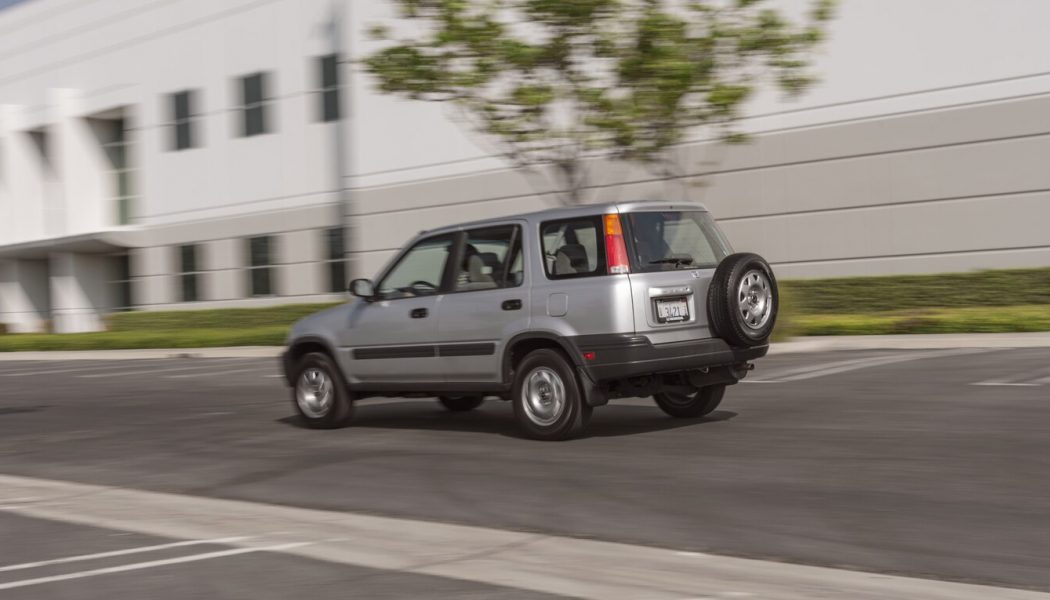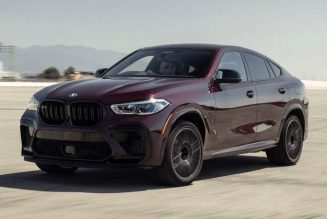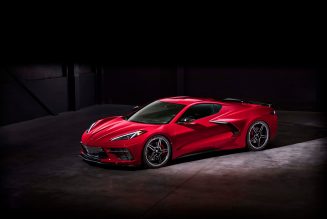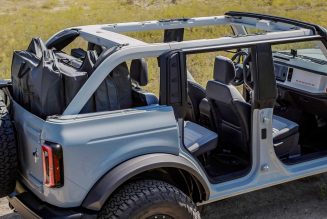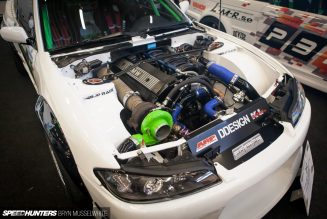Joy, then puzzlement: That was my reaction when Honda asked if I’d like to drive a vehicle from their semi-secret museum in southern California—and then told me that museum piece was a 1997 Honda CR-V. Okay, I realize it’s been nearly 25 years (cripes, where does the time go?) since the Honda CR-V first hit these shores, and what a seminal game-changer it was. But … a CR-V? In a museum? “Does not compute,” buzzes the 1970s-era computer that is my brain.
And that brings me to the present day, with me trying to keep an open mind as I cruise down to Torrance in a latest-and-greatest 2021 Honda CR-V. I pull into the faceless industrial park that conceals Honda’s museum, and there it is: An anonymous ’97 CR-V DX with all-wheel-drive—sorry, Real-Time 4-Wheel-Drive—its silver paint blending obediently into the background.
This is a museum piece? I think. Here in rust-free Southern California, there are still first-gen CR-Vs in front-line family service. Where Honda sees a collector car, I see a viable family truckster.
But as I open old ’97’s driver door, I am virtually smacked in the face by two and a half decades’ worth of progress. The door itself feels way too light and way too flimsy. The front seats are basic buckets on plinths. The near-vertical windshield pillars look as skinny as a fashion model’s forearms.
Before I take off, there is one thing I must see for myself, and it’s around back. I flip up the rear glass and pop open the tailgate, which swings open to the side, lift the carpet, and there it is—the cargo floor that doubles as a picnic table! I pop it out and set it up. I bet it hasn’t been used more than half a dozen times in the car’s 25 years. It was a whimsical gimmick, especially for straight-laced Honda, but a memorable (and, occasionally, functional) one.
More Honda-like is the string-and-hook built into its underside, which holds the picnic table out of the way when doing its primary job as the CR-V’s lift-up cargo floor. Ditto the grocery hook that folds flush into the tailgate panel. It was those thoughtful touches that won buyers away from American and German cars.
I pull myself into the driver’s seat, reach to adjust the rear-view mirror, and think, crap, I forgot to close the tailgate! Nope, I didn’t—I’d just forgotten how big rear windows used to be. The 1997 Honda CR-V is big on glass and small on roof support, to the point that the side mirrors seem superfluous. I can turn my head and see all around me, and there are even holes in the headrests to facilitate over-the-shoulder glances. The windshield is so close that I feel like I’m pressing my face up against the glass. Visibility is so good that were it not for the lack of a breeze, I could be sitting on the CR-V rather than in it.
A twist of the ignition key (remember those?) and I’m ready to go. This particular CR-V has just over 248,000 miles on it, which I would never have guessed from its appearance. The museum recently bought the car from an employee, and it required no major repairs, just some routine maintenance and a few odds and ends.
This particular CR-V is the basic DX model, and I marvel at the simplicity of its controls. I go to stow my phone, but of course there’s no place to put it save a deep cubby under the radio. There’s no trip computer, either, but there is a trip odometer. It’s mechanical. So is the service reminder, a little green square geared to the odo that flips yellow then red every few thousand miles.
I pull back and down on the golf-ball-pattern column shifter to find Drive, and we’re away. Honda, concerned about the CR-V’s high mileage, has asked me to stay close to the museum; apparently they have less faith in their old cars than I do. I roll down the windows, remembering that the switches are located on dashboard to the left of the steering wheel—oh, how that used to drive the critics crazy!
Accelerating away from the industrial park, I’m reminded how spoiled we are by today’s multi-speed transmissions—or more specifically, how spoiled our engines are. In the 2021 Honda CR-V, you prod the accelerator and the CVT just picks another ratio. The ’97 CR-V’s transmission has only four speeds, and a moderate prod of the gas means the engine actually has to work for a living.
This, in turn, reminds me how noisy Hondas used to be. The engine roars, the tires moan, and the wind whooshes. I’ve been in this job long enough to know this isn’t down to the CR-V’s age or mileage; this is the way Hondas were in the 1990s, and no one ever seemed to call the company out for it.
The steering is heavier than I expected, and the way it loads up as I turn in is just magical—I’ve forgotten how good hydraulic assist can feel. Same for the way the brake pedal builds resistance. I take a sharp right and the CR-V leans heavily. By today’s standards we’d say it was too softly sprung, but back in 1997, an SUV that felt this much like a car was a novelty. The CR-V was competing against body-on-frame behemoths, and Honda had to dial in a little softness in order for the CR-V to be taken seriously. Heaven forbid it was branded with the “tall wagon” epithet that doomed the Civic Wagonvan of the 1980s.
And yet, for all that slight plushness, there is an underlying brilliance, that nimble and light feel for which Hondas were known. The 1990s were Honda’s golden age, and the CR-V can no more escape its DNA then you or I can. Back then, Honda couldn’t build a sloppy-handling car even if they tried. (But it wasn’t all sunshine and roses … remember the first-generation Odyssey? No? My point exactly.)
The wide, straight streets of Torrance don’t require much concentration, so I take a little more time to take in my surroundings. I’d forgotten that a car can feel both substantial and stingy at the same time. Everything in the CR-V looks flimsy but feels sturdy. Instead of a center console, the CR-V has a little tray that folds flat against the passenger seat, allowing parents to attend to fretting kids, just like they could in a minivan. The dash-mounted cupholder is made of the cheapest plastic imaginable, but the way it slides smoothly in and out of the center stack a pure delight, the kind of mechanism that can only result from long nights of marriage-busting coffee-and-nicotine-fueled engineering obsession.
A little music, perhaps? The absurdly-tiny stereo has AM and FM bands but no satellite radio, no auxiliary input, and certainly no Bluetooth. Because this CR-V is a DX model, there isn’t even a cassette deck. On the plus side, if you weren’t satisfied with your CR-V’s stereo in ’97, you could whip out your Crutchfield catalog and buy a new single-DIN one that would slide right into place. Try that in a 2021 CR-V.
Time to try her out on the freeway. The CR-V has to kick down to second gear to get up to speed, but man, does it sound wonderful! The engine note is better than a modern-day Honda Civic Type R, if you ask me. I give the turn signal stalk a quick flip and am rewarded with a single click. Oh, duh—this thing was built years before the lazy-lane-change feature. If you want to indicate with three flashes, then dammit, you’re going to have to put the work in.
I find myself stuck behind a truck doing 50, so I floor the accelerator and summon all 126 of the 2.0 liter engine’s horses. The CR-V doesn’t quite leap into the gap; rather it canters with verve. We really do live in the golden age of horsepower.
We cruise along at an even 70, the CR-V and I, and I can’t get over what amazing shape this car is in. There’s a little play in the steering wheel, but it tracks straight and true. The whole car feels impressively tight, and it’s hard to think of it as a quarter-century-old classic. If the Honda folks had taped over the odometer, I’d have guessed that this CR-V had done 25,000 miles, not 250,000.
I’ve always thought that a museum piece ought to be a zero-mile car plucked straight from the assembly line and packed with all the tech its era had to offer, but I’m starting to think that this high-mileage, anonymous, work-a-day CR-V is perhaps the best possible testament to Honda in the 1990s: a car designed for maximum service and minimum trouble.
Classic CRXs are all well and good, but this quarter-million-mile family coach is what Hondas are all about. This silver 1997 CR-V DX, for all its simplicity and anonymity, is the perfect museum piece.
